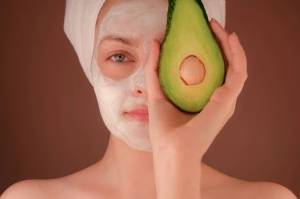 November is skin care awareness month, and although it is not a subject I discuss often in my blog or instagram, dermatology makes up a huge part of Chinese medical literature. As always, I hope and believe people will consider us to treat the actual root (not “the root” that certain pharmaceuticals’ TV ads claim to) of any skin issues that might befall them.
November is skin care awareness month, and although it is not a subject I discuss often in my blog or instagram, dermatology makes up a huge part of Chinese medical literature. As always, I hope and believe people will consider us to treat the actual root (not “the root” that certain pharmaceuticals’ TV ads claim to) of any skin issues that might befall them.
The first time my daughter had Covid she recovered quickly, as most babies and toddlers do, but it left her with some atopic skin issue on her face. We applied some topical creams that had been helpful with issues in the past, but to no avail. I consulted a teacher of mine, who recommended a formula we don’t generally think of for dermatology. It would be more categorized—that is oversimplified—as an immunological treatment, containing all the usual suspects for an exterior virus: Ephedra, ginger, wild ginger, cinnamon branch, etc.
My apologies for the cliche, magical resolution anecdote, but it does happen and did so here, probably and partially because of how young and fundamentally healthy she is. Her skin cleared up within 24 hours, to never return. We didn’t even finish the recommended dosages.
In Chinese medicine the liver is said to connect to our tendons, the stomach to our muscles (which is why proper diet can potentiate strength training), kidneys to the bones, and lungs to the skin. One way or another, most skin issues can be traced back to either our lungs, or their “paired organ,” the large intestine. In the case of my daughter, it was obviously the former.
There are 2 fundamental reasons why our skin erupts. Either inflammation trapped somewhere in the body is seeking an escape route, or a lack of blood and vital substances in the body are failing to reach the surface to lubricate and/or nourish our proverbial “exterior.” To assign the same prescription to both patterns based on a biomedical label would be ludicrous.
Cases of the former generally present as hot, red, itchy, and angry, whereas the latter are paler in color, dryer in texture, and more troubling cosmetically than anything else. Nevertheless, cosmetics matter. We’re all entitled to nice skin—more importantly to the quality and quantity of blood that belies it.
Hot and red, itchy skin generally benefits from a (closer to) vegan diet, plus bitter and anti-inflammatory herbs and foods, such as dandelion greens, kale, green tea, and a hiatus from alcohol. Acupuncture points are used to clear heat and fluid retention. We might also bleed particular vessels near the sites of eruptions to help move stagnant blood perpetuating the vicious cycle. Herbal medicines might revolve around gardenia fruit and scutellaria bark.
Pale, dry skin earns the opposite recommendation: Meat, beef, and more meat, bone broth, eggs, and plenty of sleep to help restore and regenerate blood. Black tea instead of green tea, the latter of which might further weaken the stomach with its bitterness; and moxibustion more than acupuncture to help warm and strengthen the organs. Herbal medicines likely revolve more around angelica and peony root, both of which can also be instrumental in reducing menstrual cramps. In both patterns, abstinence from dairy is advisable.
Finally, and as always, important to get your annual skin cancer scans with your dermatologist to rule out anything that is better taken care of with modern technology.


